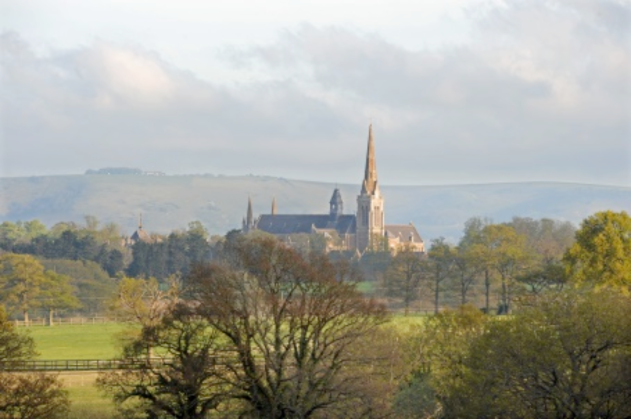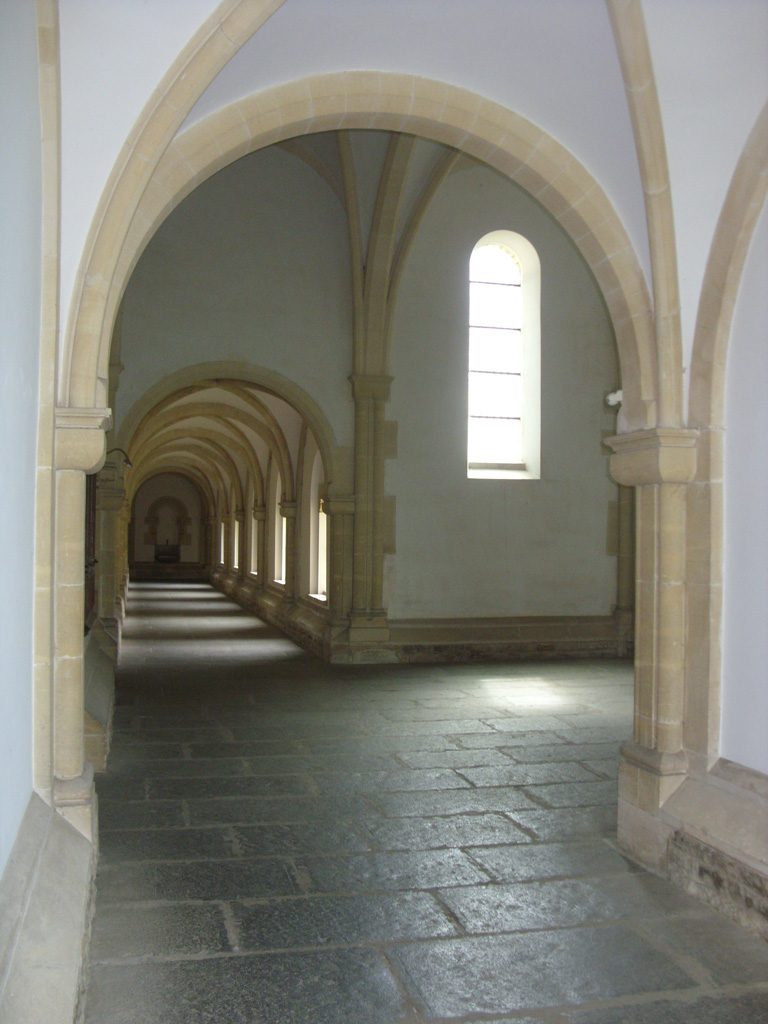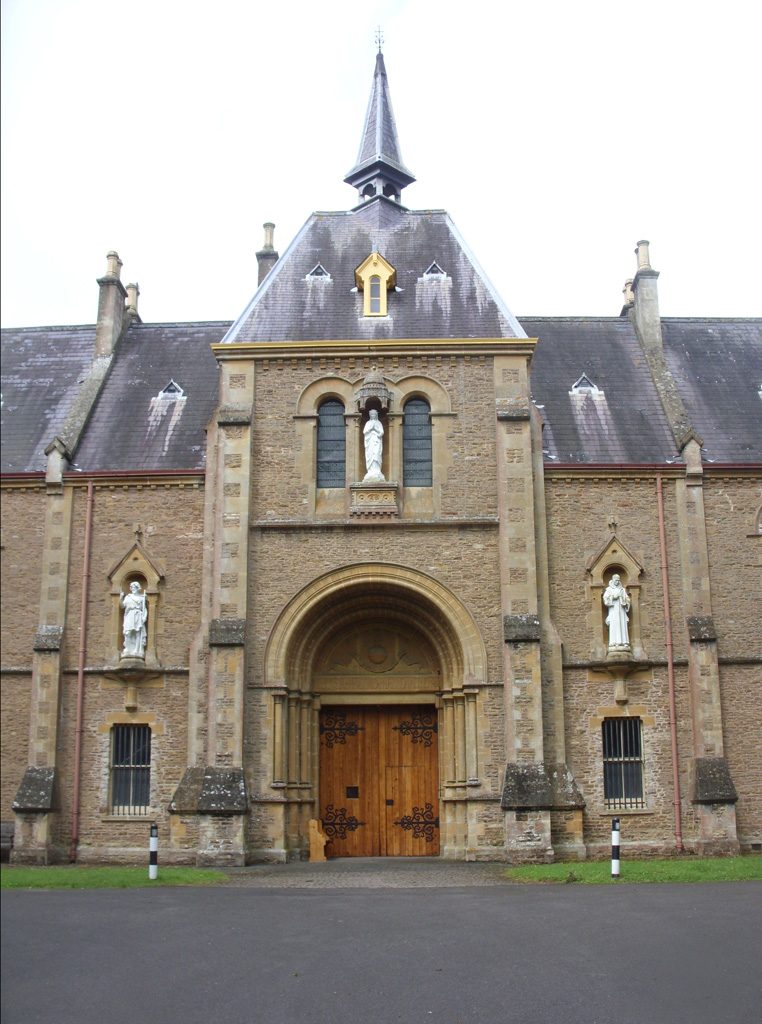
Monastery in the distance (photograph by courtesy of Gerry Penny)

Photograph by courtesy of Paul Smith
As well as St Peter’s Church, the other dominant feature of religious life from the late 19th century was the establishment of a branch of the Carthusian Order at St Hugh’s monastery on land that had been part of the Parknowle estate. This impressive and large building was started in 1877 and took six years to build, being consecrated in 1883. It was an enormous construction project, costing approximately £200,000 and employing around 600 workmen from England, France, Germany and Belgium. The building covers approximately 10 acres, its spire is 203 feet high, the cloisters are 1,107 yards long, and there is accommodation for 36 fathers and 100 brothers, although the population now is considerably less than that. Today it has the world’s largest enclosed cloister containing an orchard of 3.5 acres (from which the monks produce apple wine). The building and in particular the spire are significant landmarks in the area, dominating the landscape, and can be seen from as far away as Albourne village to the south east and the Devil’s Dyke to the south.
The community of monks lived (and continue to live) in great solitude and silence in order to commune with God. Their interaction with the outside world is minimal, although monks can often be seen walking in the area and in the nearby villages. The main interaction with Cowfold during the construction was over the increase in traffic through the village, and damage caused to the roads by traction engines bringing stones to the site. A letter was sent to the Home Secretary asking for, and receiving, a ban on traction engines passing through the village, and alternative routes had to be found.

Photograph by courtesy of Paul Smith
